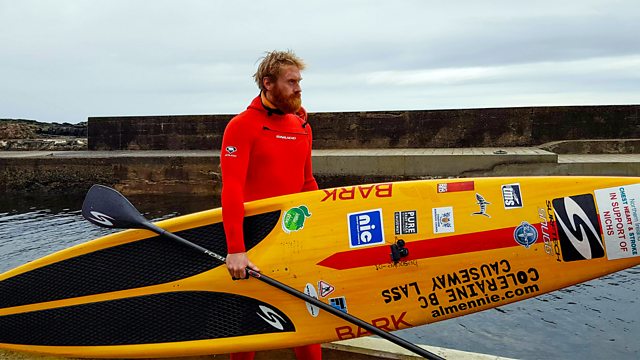
Fishermen on the Xiapu mudflats make an unexpected income from the tide, while at Strangford Lough, Brent geese depend on the tide to eat. And we follow surfer Al Mennie鈥檚 tidal training.
Meet the people who depend on the tide for their living, those whose lifestyle revolves around its ebb and flow, as well as those for whom changes to tidal patterns threaten their whole way of life.
On Omey, a tidal island off Ireland鈥檚 west coast, a thrilling beach horse race is held on a date dictated by the tides. It鈥檚 a tightly run event. Will everyone make it back to the mainland before the incoming tide cuts Omey off once more?
Big wave surfer Al Mennie moves his schedule around to be able to train with the tide. His gruelling regime sees him paddle board the tempestuous north coast between Portrush and Portballintrae, as he reveals the important role the tide plays in his preparations to catch monster waves.
Off Scotland鈥檚 west coast lie the treacherous Kylerhea Straits where the tide can move at speeds of eight knots. So the young trainee skipper of the Glenelg to Kylerhea ferry, which operates between the mainland and the Isle of Skye, must learn to work with the tide to bring the unique car ferry and its passengers safely across this ancient and scenic route. But it鈥檚 not just humans who depend on the tide. During the autumn more than 75 per cent of the world population of light-bellied Brent geese that make the journey from Arctic Canada can be found at Strangford Lough. The geese are attracted by one thing 鈥� the zostera, or eel grass, that grows abundantly on the tidal flats. They must wait patiently for the tide to roll back enough for them to get at their meal.
On China鈥檚 vast Xiapu mudflats some of the fishermen make a rather unexpected source of income. By posing with their nets in different locations at various stages of the tide, they can now earn more as photographic models than fishermen in this beautiful spot. If any country on earth has learned to live with the tide, it's the Netherlands. The Maeslantkering is a huge storm surge barrier, a remarkable feat of engineering. If the water level rises three metres above Amsterdam鈥檚 ordnance zero, the arms of the barrier are activated to protect the population.

